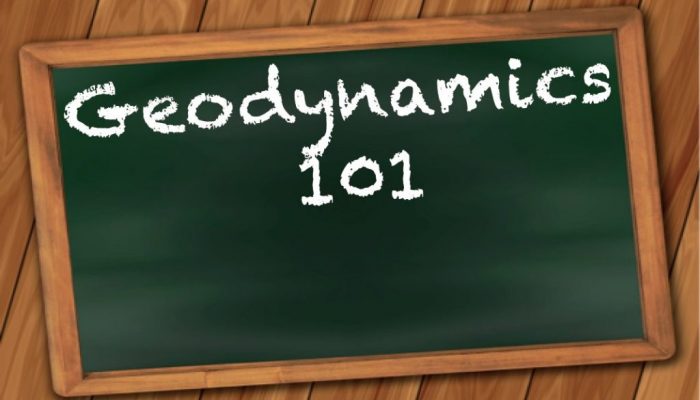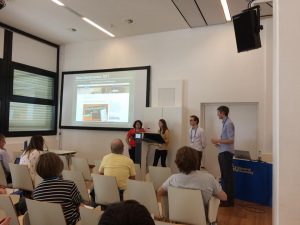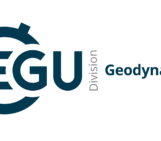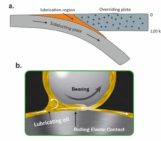
Yesterday (Wednesday, April 12, 2018), the first ever Geodynamics 101 short course at EGU was held. It was inspired by our regular blog series of the same name. I can happily report that it was a success! With at least 60 people attending (admittedly, we didn’t count as we were trying to focus on explaining geodynamics) we had a nicely filled room. Surprisingly, quite some geodynamicists were in the audience. Hopefully, we inspired them with new, fun ways to communicate geodynamics to people from other disciplines.
The short course was organised by me (Iris van Zelst, ETH Zürich), Adina Pusok (ECS GD Representative; UCSD, Scripps Institution of Oceanography, IGPP), Antoine Rozel (ETH Zürich), Fabio Crameri (CEED, Oslo), Juliane Dannberg (UC Davis), and Anne Glerum (GFZ Potsdam). Unfortunately, Anne and Juliane were unable to attend EGU, so the presentation was given by Antoine, Adina, Fabio and me in the end.
The main goal of this short course was to provide an introduction into the basic concepts of numerical modelling of solid Earth processes in the Earth’s crust and mantle in a non-technical, fun manner. It was dedicated to everyone who is interested in, but not necessarily experienced with, understanding numerical models; in particular early career scientists (BSc, MSc, PhD students and postdocs) and people who are new to the field of geodynamic modelling. Emphasis was put on what numerical models are and how scientists can interpret, use, and work with them while taking into account the advantages and limitations of the different methods. We went through setting up a numerical model in a step-by-step process, with specific examples from key papers and problems in solid Earth geodynamics to showcase:
(1) The motivation behind using numerical methods,
(2) The basic equations used in geodynamic modelling studies, what they mean, and their assumptions,
(3) How to choose appropriate numerical methods,
(4) How to benchmark the resulting code,
(5) How to go from the geological problem to the model setup,
(6) How to set initial and boundary conditions,
(7) How to interpret the model results.
Armed with the knowledge of a typical modelling workflow, we hope that our participants will now be able to better assess geodynamical papers and maybe even start working with numerical methods themselves in the future.
Apart from the Geodynamics 101 course, the evening was packed with ECS events for geodynamicists. About 40 people attended the ECS GD dinner at Wieden Bräu that was organised by Adina and Nico (the ECS Co-representative for geodynamics; full introduction will follow soon). After the dinner, most people went onwards to Bermuda Bräu for drinks with the geodynamics, tectonics & structural geology, and seismology division. It featured lots of dancing and networking and should thus be also considered a great success. On to the last couple of days packed with science!





